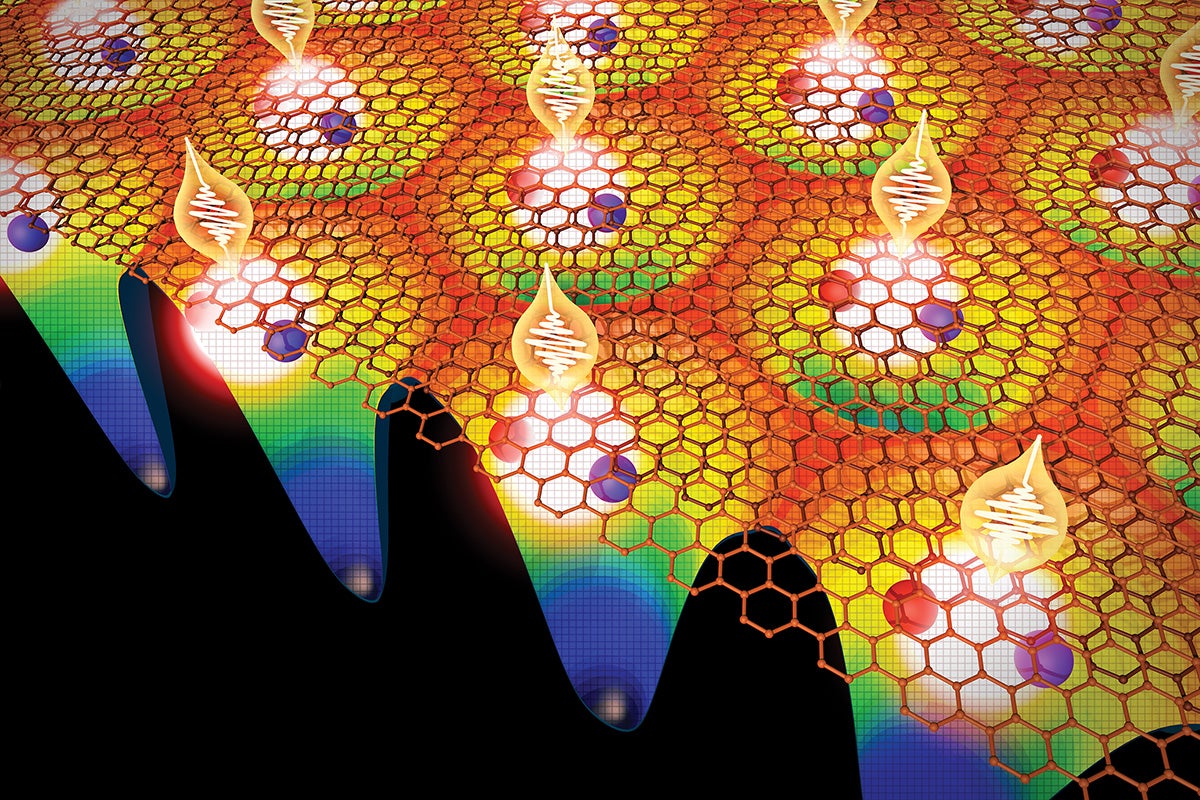Chemist’s Innovation Spurs Drugs that Hang on Through Thick and Thin
The newly launched Hyku Biosciences provides a platform for covalent drug development which may be a better approach for treating diseases like cancer.

One of Hsu's SuTEx molecules targets sites on proteins that have extra electrons to share. Drugs that bond covalently have a more stable attachment compared to traditional drugs. Credit: Zhihong Li
Ku-Lung (Ken) Hsu believes creativity is essential for developing the necessary chemistry for more effective cancer-fighting drugs. It was such creativity that drove Hsu, an associate professor of chemistry at The University of Texas at Austin, to a discovery that has since led to the recent public launch of a multi-million-dollar biotechnology startup dedicated to fighting cancer.
Many cancer drugs work by interacting with some critical protein that the cancer needs to thrive, blocking it from functioning. One reason traditional drugs may fail is that their hold on a protein target is often tenuous: eventually their grip loosens because they can be broken down quickly in the body, releasing the protein to carry on its dirty work. To keep the proteins inactivated, the patient needs to sustain a certain amount of the drug circulating in the body.
Hsu’s approach, using covalent chemistry, is focused on designing drugs that lock on and don’t let go, thanks to a stable covalent bond between the cancer target protein and drug. Typically, researchers make covalent drugs that are good at binding to cysteine—one of 20 amino acids that make up proteins—because it has the highest tendency to share electrons and form a bond (also termed nucleophilicity). Hsu has developed a chemistry that targets other parts of proteins, namely the amino acids tyrosine and lysine.
His approach has been licensed to a new biotech startup called Hyku Biosciences, which publicly launched in the greater Boston area last month with $56 million in seed financing. The startup aims to develop precision covalent medicines in oncology and has Hsu as its scientific founder.
“We wanted to build on the success of current covalent drugs and expand capabilities beyond cysteine by going after other functional sites on proteins,” said Hsu, the Stephen F. and Fay Evans Martin Endowed Associate Professor in the Department of Chemistry and a CPRIT Scholar. “Maybe that will allow us to go after proteins that have been intractable through current methods and begin to target different diseases.”
Before he and his lab relocated from the University of Virginia to UT, Hsu and his team created some Texan-sounding chemistry called SuTEx. Short for sulfur-triazole exchange chemistry, it involves a group of compounds that can form a stable covalent bond with underexplored nucleophile sites on proteins—in other words, those sites with extra electrons to share—while avoiding reaction with the more nucleophilic and common cysteine residue.
Eventually, he and his team hope to develop chemistry that can access amino acids even beyond tyrosine and lysine. The idea is that, through these chemistries, there will be new opportunities for developing potentially life-saving medicines.
Covalent chemistry could offer a better approach to deactivating cancer proteins, for example, which have long half-lives — meaning they linger in the body for extended periods of time. This technique could also enable drug discovery against cancer proteins that are not enzymes but instead drive tumor growth by binding to other proteins, DNA or RNA.
“By covalently attaching to the site, you can block these types of interactions or recognition events, which is harder to do with compounds that bind through a reversible mechanism,” Hsu said. “You would have to develop a very potent compound that can stick around long enough to out-compete that interaction.”
Hsu and his team have demonstrated this technique in live cells and are approaching pre-clinical stages where they will test this chemistry in animal models. The goal is to develop more effective medicine for patients struggling with diseases that are difficult to treat using traditional methods.
A New Probe for Protein-RNA Interactions
Hsu and his lab continue to work also on innovative chemistry with applications that extend beyond medicine and into more foundational areas of science. In a paper published earlier this month in Nature Communications, he and a team describe using chemistry to engineer natural building blocks of nucleic acids, called purines, into a chemical probe for measuring RNA-binding activity across the collection of proteins found in cells (also known as the proteome).
In particular, the new method allows scientists to peer into cells and discover precise proteins and binding regions that interact with RNA. The innovation could help improve understanding of how proteins control the function and fate of RNA. These RNAs include coding RNAs, such as those that carry instructions for building proteins, as well as non-coding RNAs that are more diverse and abundant in our bodies, but poorly defined in terms of function. This technology (dubbed PACCE) can help reveal insights that may be important for drug discovery and new therapies that depend on controlling key protein-RNA interactions.


